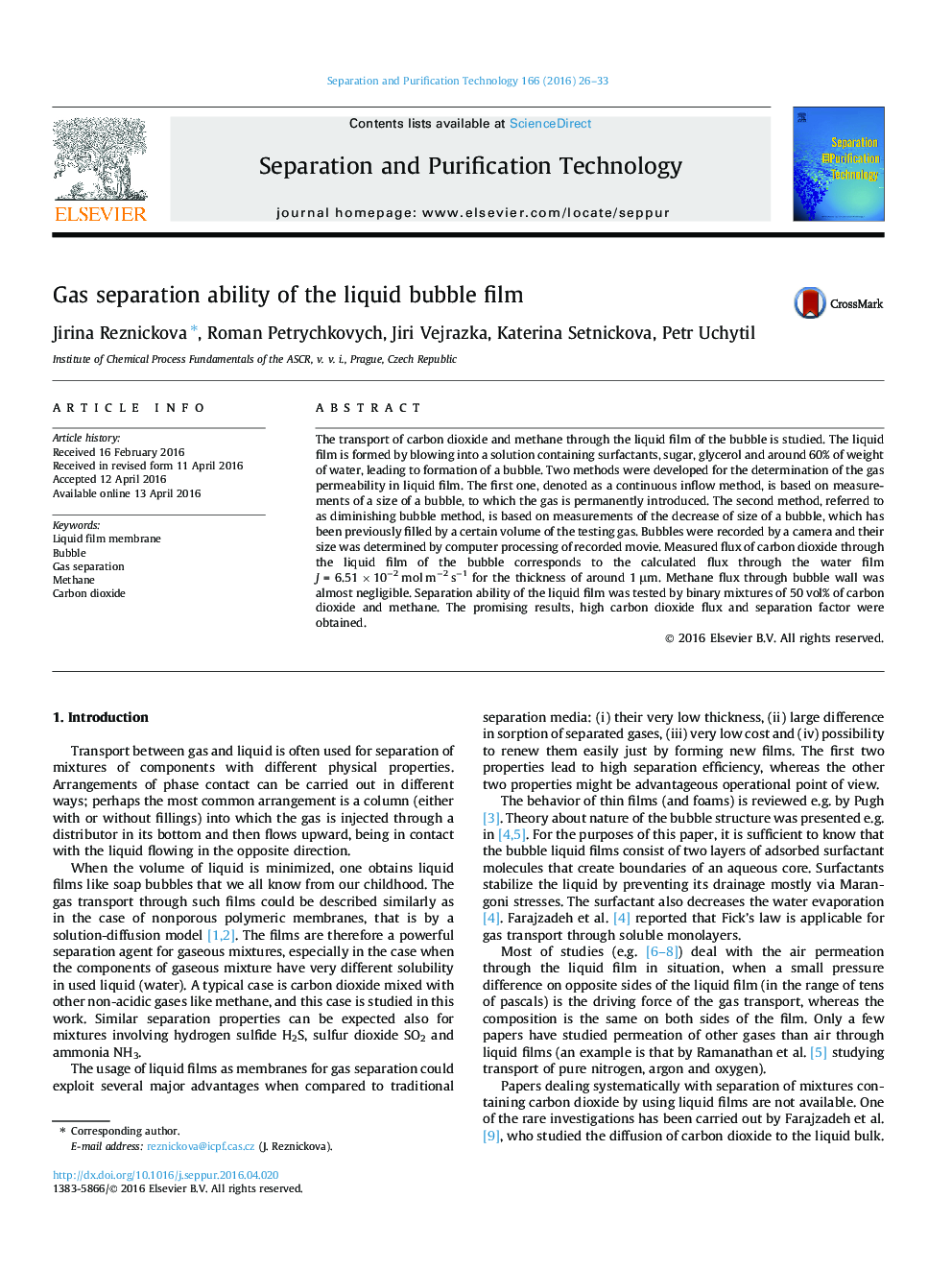| Article ID | Journal | Published Year | Pages | File Type |
|---|---|---|---|---|
| 640115 | Separation and Purification Technology | 2016 | 8 Pages |
•New approach to gas separation by liquid membrane.•Transport of carbon dioxide and methane through the liquid film.•Permeability and selectivity of the bubble film.
The transport of carbon dioxide and methane through the liquid film of the bubble is studied. The liquid film is formed by blowing into a solution containing surfactants, sugar, glycerol and around 60% of weight of water, leading to formation of a bubble. Two methods were developed for the determination of the gas permeability in liquid film. The first one, denoted as a continuous inflow method, is based on measurements of a size of a bubble, to which the gas is permanently introduced. The second method, referred to as diminishing bubble method, is based on measurements of the decrease of size of a bubble, which has been previously filled by a certain volume of the testing gas. Bubbles were recorded by a camera and their size was determined by computer processing of recorded movie. Measured flux of carbon dioxide through the liquid film of the bubble corresponds to the calculated flux through the water film J = 6.51 × 10−2 mol m−2 s−1 for the thickness of around 1 μm. Methane flux through bubble wall was almost negligible. Separation ability of the liquid film was tested by binary mixtures of 50 vol% of carbon dioxide and methane. The promising results, high carbon dioxide flux and separation factor were obtained.
Graphical abstractFigure optionsDownload full-size imageDownload as PowerPoint slide
